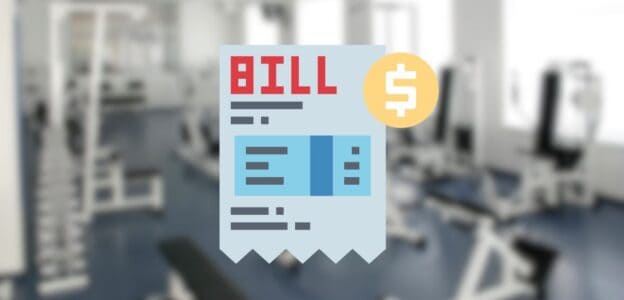An effective communication strategy with your members and team is essential for a successful fitness business. Clear and concise gym client communication is crucial when interacting with your team. Clarity and brevity are also essential when dealing with clients. Understanding and communicating their needs is important to providing the best possible experience.
With the right gym management software, you can transform your communication game. This guide is your key to unlocking the potential of gym management software, enabling you to improve communication with both your customers and your staff and, ultimately, enhance your fitness business.
Why Clear Communication Is Essential to Boosting Gym Business Success?

Effective gym client communication plays a crucial role in the success of gym businesses and in strengthening connections with customers. Improving communication with members can elevate the relationships between gym staff and customers, creating a more emotional and connected environment. This approach has been shown to significantly increase sales and lead generation in fitness businesses by fostering trust and loyalty among members.
Trust and loyalty are vital for retaining members and generating new leads. By implementing communication strategies tailored to individual member needs, gyms can greatly improve member engagement and satisfaction. Personalizing communication, such as segmenting members based on their preferences and fitness goals, makes interactions more relevant and impactful.
Moreover, promoting a positive gym culture through clear and consistent communication helps cultivate a sense of community and belonging. This not only aids in retaining members but also creates a supportive and inclusive atmosphere that encourages members to pursue their fitness objectives.
What Is a Gym Management Software?
Gym management software is a tool designed to help fitness businesses manage all facets of their operations and run their studios efficiently. These systems typically include a range of administrative and operational features that assist in organizing and tracking member attendance, billing, class schedules, product management, and memberships.
Although these platforms may vary in name, they generally offer similar functionalities and serve the same purposes. Gym management software facilitates the management of class and trainer schedules, processes payments, and supports gym-client communication.
In many gym management systems, members have access to a client-facing portal and a complimentary fitness app. This allows them to easily log in, join memberships, schedule classes or appointments, track their workouts, and handle payments.
Leveraging Gym Management Software for Clear Client Communication

Effective communication with clients doesn’t have to involve a continuous stream of emails and messages between fitness studios, their teams, and members.
By utilizing the automation and messaging tools available in your fitness studio software, you can develop a communication strategy that ensures transparency and visibility across your business without being constantly tied to your phone or computer. You can collaborate with your gym management software to enhance the customer experience.
Centralized Communication
Gym management platforms equipped with a centralized communication junction offer numerous advantages for managing interactions with gym members. These platforms integrate various communication tools such as email, SMS, and social media, allowing gym owners to handle all communications from a single interface. This unified approach ensures consistency in messaging and prevents important communications from being overlooked.
One key feature of these platforms is the ability to send automated reminders for classes, membership renewals, and special events. This helps keep communication regular and clear, enhancing member engagement and satisfaction. By automating repetitive communication tasks, gym owners can focus more on personal interactions and member services, which are crucial for member retention.
The centralized system also allows for streamlined workflows, better security with controlled access to communication tools, and comprehensive data analytics. These analytics enable gym owners to track the effectiveness of their communication strategies and make data-driven decisions to improve engagement and reduce operational costs. Overall, the integration of a centralized gym client communication hub in software provides a practical solution to manage member communications effectively, ensuring that both operational efficiency and customer satisfaction are enhanced.
Personalized Interaction
Gym management software significantly enhances client engagement through personalized interactions. As mentioned, these systems utilize advanced data analytics (with newer systems leveraging artificial intelligence) to understand and anticipate individual member needs, preferences, and fitness goals. By tracking activities and engagement patterns, the software can tailor communications specifically to each member, such as personalized workout suggestions, motivational messages, and timely reminders about gym activities that align with their interests.
This customization not only improves member satisfaction by making them feel valued and understood but also boosts retention rates by fostering a sense of community and belonging. For instance, gym management platforms can send automated greetings on special occasions like birthdays or congratulate members on their workout milestones, adding a personal touch that goes beyond generic interactions.
The integration of AI into these systems allows for a seamless experience where gym staff can manage relationships more efficiently, leaving more time to focus on personal interactions that enhance the customer experience.
Efficient Lead Capturing
Fitness studio software with integrated CRM (Customer Relationship Management) features enhances the efficiency of lead management by providing robust tools to capture, organize, and engage potential clients effectively. These systems enable gyms to categorize leads based on their activity levels, interests, and interaction history, allowing for more targeted and personalized communication strategies.
One key advantage of using CRM features in gym management software is the ability to track the progress of each lead throughout the customer journey. This tracking includes monitoring interactions and responses to marketing efforts, which helps gyms optimize their outreach and conversion strategies. For instance, gyms can tailor their communications to meet potential clients at their point of need by acknowledging their fitness goals, preferences, and readiness to join.
Seamless Event Invitations and Reminders

Gyms can leverage the advanced communication capabilities of Customer Relationship Management (CRM) software to manage and send invitations and reminders for upcoming events efficiently. This includes workshops, seminars, and special gatherings tailored to enhance member engagement. By utilizing automated features within the fitness studio software, gyms can schedule and dispatch bulk reminders as the event date nears. This strategy helps ensure that members are well-informed and take advantage of valuable opportunities to engage with fellow members, learn new skills, and participate in community-building activities.
This direct communication streamlines the process, making it more likely that members will feel personally invited and connected to the gym’s community. Such tailored messaging enhances the member experience and boosts overall participation rates, contributing to the success of each event and reinforcing the gym’s reputation as a supportive and engaging community hub.
Streamlined Billing Communication
Gym management software greatly improves the efficiency of billing and membership renewals through automated member notifications, boosting operational effectiveness and client satisfaction. This automation ensures that financial communications are timely and precise, maintaining professionalism while reducing the burden of administrative tasks. By handling renewals and billing automatically, the software minimizes errors and allows staff to focus more on client service and other critical tasks.
These systems enable gym owners to set up recurring payments and send reminders for membership renewals. This guarantees uninterrupted service for clients and ensures a consistent cash flow for the gym.
Furthermore, these systems improve the member experience by facilitating smooth and effortless financial transactions. Members benefit from the convenience of having their membership fees processed automatically, eliminating the need for frequent manual input. This automation leads to greater member satisfaction and loyalty, as members can enjoy continuous access to gym services without disruptions.
Member Management and Retention
Gym management software enhances member management and retention by offering powerful tools to monitor member activities and attendance. These systems collect detailed data on member interactions and achievements, enabling personalized communication and stronger relationships. For example, the software can track and celebrate milestones such as membership anniversaries or personal fitness achievements, directly contributing to higher member satisfaction and retention.
Features like attendance tracking help gyms identify highly engaged members and those with declining participation. By recognizing these patterns, gyms can tailor their outreach and engagement efforts more effectively, potentially re-engaging members at risk of leaving. Additionally, activity monitoring enables customized communication, ensuring timely and relevant messages about member-specific issues or achievements, further personalizing the member experience.
Conclusion
Gym management software plays a pivotal role in enhancing communication between fitness businesses and their clients. By centralizing communication, this software ensures consistent and clear messaging through various channels, such as email, SMS, and social media. This unified approach not only improves member engagement but also streamlines administrative tasks, allowing gym owners to focus more on personal interactions.
Personalized communication is another significant advantage, as gym management software uses data analytics to tailor messages to individual member needs and preferences. This customization fosters a sense of community and belonging, leading to higher member satisfaction and retention rates.
Additionally, efficient lead management and seamless event invitations through CRM features help gyms target potential clients effectively and ensure high participation in events. Automated billing communication further enhances operational efficiency, ensuring timely and accurate financial transactions.
Overall, adopting gym management software revolutionizes client communication, making it more efficient, personalized, and effective. This transformation not only improves member satisfaction and loyalty but also boosts the overall success and profitability of fitness businesses.
Frequently Asked Questions
Gym management software can improve communication by automating routine interactions like email campaigns, SMS, and push notifications. This ensures clients receive timely updates about events, changes, and promotions, keeping them engaged and informed.
Look for software with integrated email, SMS messaging, and push notifications. Member segmentation for personalized communication and automated feedback collection are also important features to enhance client interaction and service improvement.
Yes, it can. Gym management software allows for targeted messaging by segmenting members based on demographics, behavior, and preferences. Personalized communication, such as workout tips, birthday greetings, and class promotions, can enhance client satisfaction and loyalty.
Yes, there are cost-effective options available, including communication tools. Some platforms offer free plans or trial periods with basic features like email and SMS messaging, which is ideal for small- to medium-sized gyms to engage clients without significant investment.































